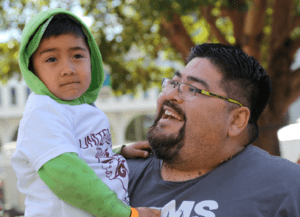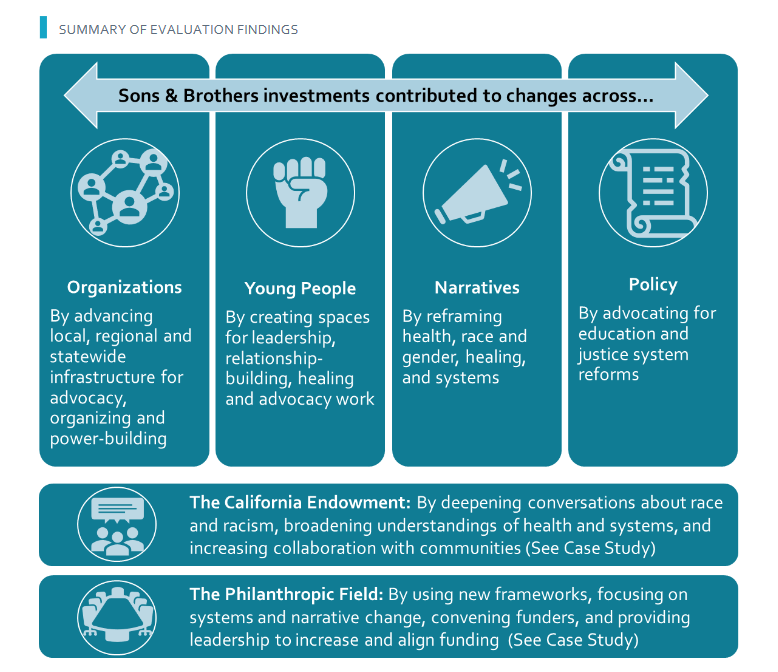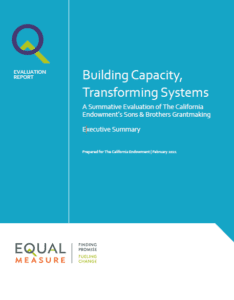The Sons & Brothers investments in local and statewide partner organizations unquestionably contributed to positive changes that should lead to improving health outcomes and reducing inequities for boys and men of color in California. Along the path of making positive changes to organizations, coalitions, young people, and systems, Sons & Brothers also grappled with challenges and issues of inclusion, focus, and the distribution of power. Report authored by Jennifer Thompson, Kristin Giordano, and Robert Roach.
In 2010, The California Endowment began an ambitious 10-year initiative called Building Healthy Communities (BHC)―a $1 billion effort to “advance statewide policy, change the narrative, and transform 14 of California’s communities most devastated by health inequities into places where all people have an opportunity to thrive.”
 In the early stages of the initiative, The Endowment identified 10 key outcomes for community health, including “health gaps for boys and men of color are narrowed.” The health outcome was considered critical because “addressing the social, educational, and economic disadvantages faced by boys and young men of color is essential to community health. Success here means equity in schools, more job opportunities, more alternatives to incarceration, and new youth development approaches tailored to them.”
In the early stages of the initiative, The Endowment identified 10 key outcomes for community health, including “health gaps for boys and men of color are narrowed.” The health outcome was considered critical because “addressing the social, educational, and economic disadvantages faced by boys and young men of color is essential to community health. Success here means equity in schools, more job opportunities, more alternatives to incarceration, and new youth development approaches tailored to them.”
The drive to reduce health inequities evolved into a cross-cutting, population-focused effort to advance racial and gender justice. Sons & Brothers was launched in 2013 as a seven-year, $50 million investment to “help all young people of color reach their full potential, because when our sons and daughters succeed, we all succeed.”
The report from Equal Measure and Bright Research Group outlines the findings from a two-year evaluation of Sons & Brothers. It is a look back at what Sons & Brothers was, what it accomplished, and the challenges faced along the way―and a look ahead to how learnings from Sons & Brothers can help to chart a new course forward in challenging times.

